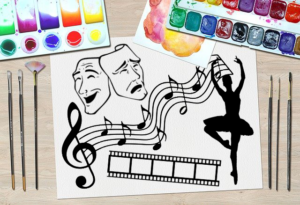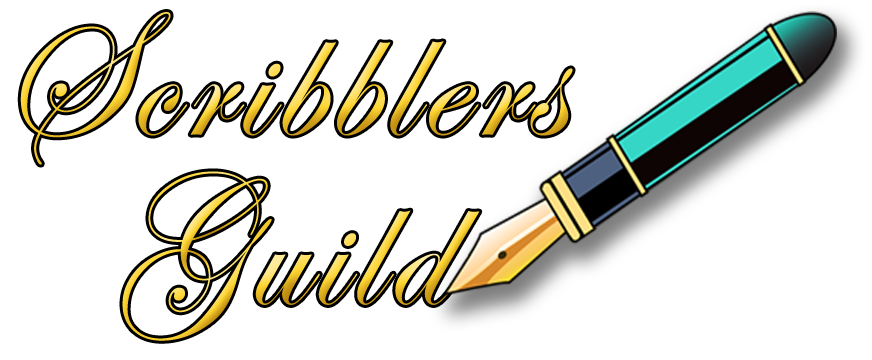Creative Cross-Pollination
 Recently, in an online chat group, a friend of mine posted this quote:
Recently, in an online chat group, a friend of mine posted this quote:
“My work is not merely about making and achieving a final product to wear or hang. They are my journey, my feelings, and my stories.” — Reiza Wahid
I think that could apply to any of our creative efforts. It’s not just the destination. It’s the journey, the learning, the transformation.
My friend went on to say, “It’s hard to explain that my diaries and origami give me such joy when there’s not much productive to show at the end. Transformation is the key – transformation of us and who we are.”
She’s right. It’s the same with painting, acting, performing, knitting, even yardwork. There’s something about the process that satisfies the soul. The end result is a bonus.
Creative Self-expression Changes Both the Artist and the Audience
And that, of course, is what we all aim for as writers. The transformation of our characters and our readers, but even more, I think, the transformation of ourselves, even if we’re not consciously aware of it as the driving force behind our desire to create.
Most of the writers I know are polymaths — people who are engaged with other creative endeavours — painting, photography and the visual arts, music and performing arts, cooking, baking and the culinary arts and crafts of all kinds. The creative urge will find a way to express itself in all of us.

The arts are all being used in a variety of ways as therapy, as well. Writing and journaling to help with PTSD, painting and visual art to help victims of abuse express what happened to them non-verbally as a way to “lance the boil”, so to speak. Theatre and storytelling as a way to overcome crippling fears of public speaking. So there’s an inherent need in all of us for different ways to express ourselves.
The medium may be the message, but it’s the creative urge that is the driving force, and it comes out as art and expression of self. In doing so, it helps the creator to grow and change. The expression of art in any form is a way for us to learn the lessons life has for us — lessons like perseverance, discipline, self-sacrifice, self-integrity and the sheer bloody-mindedness necessary to see a project through to its completion. It also helps us to confront and deal with the mental blocks and negative self-talk that holds us back, such as writer’s block.
The Necessity of Novelty
If we were to focus exclusively on our primary art form, like writing, we might come to feel that it’s a job, and when that happens, the creative urge shuts down. But by going off on a different tangent, the need to create continues to be satisfied, while still offering the novelty of a different type of learning. The fundamental lessons are the same, but how they’re expressed offers change, surprise and a new way to look at the world. More often than not, our second (or third, or fourth) creative outlet gives us new insight into some problem or challenge we may have with our primary creative pursuit, giving us a unique and original solution we would not have had without the digression.
These digressions are not procrastination and they’re not avoidance (though they can become so if they become obsessive). They’re a necessary part of the creative process. They’re essential to our growth and transformation as creative individuals.
And if they do become obsessive, it might be a sign that we were on the wrong track, to begin with. Expression of creativity is not dependant on the specific art form, though mastery of that art form might be your initial goal. Most creatives switch gears at some point in their careers when they’ve become so good at what they do that they no longer feel challenged. The thrill is gone because the novelty of learning is diminished. Many stay with their art through peer pressure or client demand but gain that creative exhilaration through the expression of a different type of creative expression.

What we call “talent” is nothing more than interest plus a powerful desire to learn the skills necessary to practice the craft at a high level. If it takes 10,000 hours to become a master of a craft, at some point there will come a lull in interest. When perseverance and discipline outweigh the excitement, when the end result becomes more important than the journey, it’s time to look at why you’re doing this at all.
If the end product is the point, the acquisition of skills can become more like a job than a love affair. But if the acquisition of skills is the point, if the joy of creating is the point, then it doesn’t matter which creative pursuit you … pursue. Even if your primary creative endeavour is how you make a living, and the end result is how you get paid, you still need to be fully engaged in the process. Because it’s the process that transforms you, and it’s the transformation you seek through creativity.
Happy Writing!

Beverley Hanna
Trained as an artist in the late 1960’s and early 1970’s, I was one of the first creatives to be employed in the computer graphics industry in Toronto during the early 1980’s. For several years, I exhibited my animal portraiture in Canada and the U.S. but when my parents needed care, I began writing as a way to stay close to them. I’ve been writing ever since. I run a highly successful local writer’s circle, teaching the craft and techniques of good writing. Many of my students have gone on to publish works of their own. I create courses aimed at seniors who wish to write memoirs, with a focus on the psychology of creatives and the alleviation of procrastination and writer's block.

2 Comments
Nancy
Bev – What an awesome post! I like how you clarified my thinking about this. And I agree that when the challenge to learn is gone, creators pivot and do something different. Because in the end, it’s about transforming ourselves.
Thanks for sharing!
Nancy
Beverley Hanna
Isn’t that what cross-pollination is all about? It’s not just the transference of ideas from one discipline to another. It’s also the transference of ideas from one person to another. All our creative pursuits are, in fact, attempts at communication, between media, between people and even between cultures. Thanks, Nancy, for the idea.